White Noise Press Archived Content
This website has been restored and archived as supplemental reading material for Dr. Dez Harman's Digital Literature course, aimed at second-year students. Dr. Harman joins the university with a robust 15-year background in digital marketing, where he earned numerous nationally recognized awards. He is perhaps best known for his innovative campaigns that propelled several online startups to prominence. Among these is the memorable viral campaign for a flameless candle and a search-focused initiative that became a case study in digital strategy effectiveness. This particular campaign was highlighted in the December 2018 cover story of Digital Riot. Dr. Harman's expertise also extends to educational technology, including a special module on how to replace Microsoft Access with customized software in literary studies. For those interested, further details about these initiatives and the full reading list and course outline are available on his university web page or through the English department resource office.
White Noise Press produces beautiful, hand-crafted chapbooks in very limited numbers, attractive to own and collect. This was their website for a number of years. Edited content is from the site's 2007 - 2016 archived pages providing a glimpse of what this site offered its readership and authors, as well as from other outside review sources.
Publisher of hand-crafted, limited edition chapbooks
of unique art and fiction.
White Noise Press
Box 93
Perkasie
Pennsylvania 18944
Necessary Evil Press Interviews White Noise Press
Cemetery Dance OnlinePosted on October 28, 2009
We decided to do something a little different in the Free Reads section this month. Below you’ll find Don Koish of Necessary Evil Press interviewing Keith Minnion of White Noise Press.
NEP: I’ll copy you here Keith and ask the normal “how did you get here” question to start this off. But I’ll revise it just a bit since you are involved in so many different aspects of the genre today. How did you start doing artwork for the horror genre?
WNP: Two people: Darrell Schweitzer and Richard Chizmar. I was in the Philadelphia SF Writer’s Workshop from the mid 1980s to the early 1990s that also had Darrell Schweitzer as a member, and at one point in 1991 he suggested I send some cutsheet samples to this guy in Maryland who was putting out a horror magazine. Darrell gave me Rich’s address, and I put some samples together and sent them off. Rich called me soon after that, and sent me three stories to do for Cemetery Dance, one of which was “The Washingtonians” by Bentley Little. During that same period I was over at the Weird Tales offices – essentially the rear second floor of George Scither’s house in West Philadelphia – hawking my portfolio, and Darrell and George handed me a Ligotti story – “The Cocoons” – to try on spec.
NEP: How long would you say it took to get your art into something that was published? What was it? The piece and publication?
WNP: I was selling paintings pretty regularly throughout college, mostly Wyeth-like watercolor landscapes. My very first published illustration, though, was a little pen and ink drawing for my second published short story called “On The Midwatch” for Isaac Asimov’s SF Magazine, back in 1979. George Scithers, the editor at Asimov’s, bought it. I was on leave from the Navy, dragging my portfolio around to publishers in NYC. Both George at Asimov’s and Stanley Schmidt at Analog had offices on the same floor. I think George was just being kind in accepting that drawing, because it wasn’t very good. As for how long it took to get published? I put together my first serious portfolio in 1979, mostly doing work when off-duty in my shipboard compartment, and that leave visit to NYC the same year was my first attempt to sell myself, so it was pretty quick. This was pre-Internet, pre-digital, pre-electronic ANYthing, remember, so going out on face interviews with a black leather zippered portfolio of original work and cutsheet sample packages that you left with art editors on a pile with a hundred other cutsheet packages was really the only way to go. Marriage and kids took up all of my time for the rest of the 1980s, though, and except for some sporadic SF assignments I didn’t get back into illustration till the early 1990s, and then it was mostly all horror illustration work for markets like Cemetery Dance, Deathrealm and Weird Tales.
NEP: Can you tell us a little bit about how you work as an artist? From the start to finish on the process of doing a cover piece?
WNP: When I read a manuscript I scribble illustration ideas on the backs of the pages and dog-ear them. After I’m done reading I edit the ideas down to those I think I can actually execute, and in the case of novels, those that are evenly spaced out in the manuscript to help with the overall finished book presentation. Then I either get friends or family to pose, or I go into my big morgue of clip art I get from old magazines for material, and block out the compositions in pencil on tracing paper. When I get that right, I transfer the drawing to the actual drawing paper or illustration board by tracing it over graphite paper. In the case of cover paintings I go over the pencil transfer with a technical ink pen. This locks the composition down in a very linear way, which I prefer. I usually work in acrylic polymer for covers, a water-based paint, because it’s fast. I also tend to follow classical egg-tempera-type painting techniques by building up shapes and textures in thin, semi-opaque layers of paint. I also like to splatter paint a lot for texture purposes, so if you would look at one of my things in an early stage you might wonder: What the hell is THAT? The final step is when I scan the painting to a digital file and give it a once-over in Photoshop, cleaning up the image, getting rid of any imperfections from the scan. The whole process often takes several weeks. I get the most satisfaction out of doing interior illustrations, though, and I can usually knock two or three of those out in a weekend. I have a day job and really long commutes, so weekends are the only time I can really work.
NEP: Do you have a website that features your artwork by chance? Is there any way for people to buy prints or even originals of your work?
WNP: Sure. I keep a virtual portfolio site at: http://www.keithminnion.com. Most of that stuff is available for sale. I just have it all stored in drawers, actually. There are prints for sale at the White Noise Press site at: http://www.whitenoisepress.com.
NEP: This isn’t the most original question, but I always love to hear the answer especially with artists. So I’ll ask it since I get to decide the questions for once. Who are some of the artists you admire? Today? Growing up?
WNP: Love this question! In junior high and high school I studied Vincent Van Gogh and Edward Hopper quite a lot. I used to do oil painting almost exclusively back then, and I admired the way Van Gogh applied a single thick and gooey layer of paint, highly saturated colors laid side by side, to do his paintings. He just blurped them out, often in a single sitting. With Hopper it was all about color and composition. I loved the empty spaces in his stuff, the volumes. Unbelievable stuff. In college the Minimalist, Conceptual and Post Conceptual movements were popular. Most of it was pure bullshit, but some of it was, as my professor Jan Groover liked to say, “A true Mind-Fuck.” We used to go down to the Soho galleries in NYC all the time and crash openings for the free wine and to actually meet some of these people. I really admired the Minimalists Robert Mangold, Bryce Marden, Robert Motherwell and Robert Ryman, and Frank Stella too, before he got into his high-relief and 3-D wall pieces. On the flip side of all that, I took a water-media class with Rudolph Zallinger, the famous dinosaur painter (The Golden Book of Dinosaurs, those incredible murals at the Peabody in New Haven) and he taught me how to paint in egg tempera – I’m talking the classic Cennino Cennini 15th century techniques, grinding pigments, cooking rabbitskin glue, marble-dust gesso, all of that. From there it was a quick jump to contemporary egg tempera painters like Robert Vickery and Andrew Wyeth – who I am fanatical about; a winter doesn’t go by when I’m not down in Chadds Ford walking those same roads and fields or gawking at stuff in the Brandywine Museum – and his father N.C. Wyeth, more juicy paint, wonderful color and composition and powerful execution. From him it was an easy jump to the Symbolists and Decadents: Maxfield Parrish, John Everett Millais, Edward Burne-Jones, John William Waterhouse, that whole crowd. I was also fascinated by the work of the contemporary British illustrator Roger Dean, who did those great YES album covers, so I studied him a lot. As for genre illustrators, I admire the ink work of Joseph Clement Cole. I also really like the work Alex McVey and Steve Gilberts are doing.
NEP: You’ve been involved in the genre for a number of years now so I’m curious to ask if you see the genre going in any type of direction. You have some that say we’re all doomed, but others say that we’ve never been healthy. Any thoughts on this?
WNP: Well, I only stumbled into the horror genre fifteen years ago, so I am hardly an expert. Before that, my only exposure had been some Shirley Jackson, some Lovecraft, and Chiller Theater the Twilight Zone on TV! Whenever I am in with a group of horror professionals and fans – like at the recent Necon 27 – I feel like the dumb kid in the back of the class. What I’ve seen from my limited perspective are just popularity waves: everybody doing vampires, then everybody doing zombies, then everybody doing zombie-vampires, etc. But that’s just the foam at the top of the beer. There’s still everything underneath, the vast body of work that everyone else is doing, and that stuff seems to be getting published with the same regularity as always, and a lot of it is really good. Beth Massie’s recent “Homeplace” is a great example, a really fine haunted house story. I would much rather curl up with that than the next ‘rip your face off and shit down your windpipe’ thing. Shock for shock’s sake doesn’t much interest me. Bores me, actually. Horror’s not going anyplace that any of the other genres aren’t also going, anyway. I think everybody just has to keep their fingers crossed that paper publishing in general remains strong, so the markets continue, across the board.
NEP: I’ve been a big fan of your art for years Keith. And I was lucky enough to get my hands on your first project as a publisher as well. It’s heavily illustrated by you and a true piece of art in itself with the envelope and endpapers. Tell everyone a little more about how you got into the publishing side of things.
WNP: At that same Philadelphia SF Writer’s Workshop back in the 1980s I met Jason Van Hollander, someone I greatly respect as both an illustrator and a writer. We became really good friends. One Saturday he brought a story to the workshop called “The Hell Book” and it just floored me, absolutely floored me. I remember saying to Darrell Schweitzer that he should buy it for Weird Tales, and, as it turned out, that’s what he did. Someday, I told Jason, I want to re-publish this in a low-run chapbook. Just an idea. Ten years later an old guy at work was retiring and he offered to give me this old Swingline saddle stitcher he was otherwise going to throw out. It was a heavy-duty manual stapler that let you staple-bind things like … chapbooks. Hmmm. I had already just purchased a high-end “giglee” ink-jet printer to do art prints, so I decided, with Jason’s permission and just for fun, to put the three together: story, stapler and printer, and see if anyone was interested. Digital graphic design using Adobe programs like In-Design, Pagemaker and Illustrator has always been a lot of fun for me, so I gave it a shot.
NEP: You’ve done all the art for White Noise Press so far. Is this something that you’ll continue to do?
WNP: Yep. I am about as cheap an illustrator as I can find, and I don’t get into any pissing matches or ego bumping with myself either. Also, the illustrations tend to evolve with the layout process, so employing myself solves that problem.
NEP: Above I was commenting on how much I loved White Noise Press chapbooks. There isn’t anything quite like your chapbooks and I have every single one of them. Can you tell us a little more about them?
WNP: They are truly hand-crafted. I don’t employ any other person or company to publish them. I copyedit the manuscripts, I design the books, I lay them out, I illustrate them, I print them, fold them, bind them, package them, all by myself. I go exploring on the Internet to find new papers for the text and covers, and I really enjoy making font family decisions and that second color choice for each chap project. I was inspired a lot by Roy Squires, the New Jersey publisher. He did a limited edition chapbook of Fritz Leiber’s “Demons of the Upper Air” that I bought when I was a teenager, and I always have that in the back of my mind as a benchmark of truly great published art object, something beyond just a stapled chapbook. Roy put all his chaps in printed slip envelopes too, which is something I decided to do also.
NEP: How do you decide on the projects you publish?
WNP: So far I have been asking writers I admire to contribute stories. I just cold-call them, what the hell, right? Some of them have actually said yes, which I still think is amazing. I wait for the story to arrive before I even think about how it will look as a finished product. The only editorial rule I have ever mentioned to anyone was: no splatter/gore/shock stuff, please. I much prefer quiet supernatural or psychological horror, and so far I have been very lucky.
NEP: You’ve already had some great success in the publishing field. Where do you see the press going from here? Do you ever see yourself going into publishing full-time?
WNP: I have chapbook commitments through 2008, so people will see three chapbooks a year coming out of White Noise Press this year and next. In 2009 I plan on retiring from my day job and going back to school to get a Master of Fine Arts degree in Drawing so I can teach at the college level in my “golden” years. I hope to continue White Noise Press projects through that period, if I can. This uncertainty factor is why I have fended off all customer requests for “lifetime” subscriptions. When I get enough chaps done to warrant it, though, I definitely plan on approaching all the authors to do a trade paperback anthology, reprinting all the White Noise Press stories, with all new illustrations, and maybe a new long piece of novelette or novella length from a new author included to sweeten the pot. “White Noise Stories.” That should be interesting.
NEP: Are there any writers you really want to work with given the chance? As an artist? As a publisher?
WNP: Argh! Anyone I DON’T mention might get offended! As an illustrator, my greatest recent thrills were illustrating some of Gene Wolf’s stories. My God, what a great writer he is. I also really like it when I get sent a story to illustrate and the name doesn’t ring a bell for me, and I only find out later that the writer was a Name and the story was Important. That happened when I got “The Box” to do for Cemetery Dance a few years ago (remember: dumb kid in the back of the class). Jack who?? Bram Stoker what??
NEP: Can you talk about what you’ll have coming out in the next six months to a year?
WNP: Sure! I am a big supporter of letting the cat out of the bag. I am currently putting together Elizabeth Massie’s very dark and complex story “Brazen Bull.” Think classic Shirley Jackson, but with Beth’s special talents mixed in. We got to go over some of the design ideas at Necon 27, and I am very excited about putting this one out as the Autumn 2007 offering. The three slots for 2008 are also filled. Kealan Patrick Burke will be contributing a story for the Spring chap; I get to illustrate another Orangefield story from Al Sarrantonio for the Summer chap, and Brian Keene just returned the contracts for a story that will appear in the Autumn slot. All new fiction. Can’t wait.
NEP: Interviewers have used this before as the last question and I always found it quite fitting and interesting. So I’m going to copy it here. Any last words? Things you would like to mention. Some great gossip to help make this the best interview ever? Now’s your chance.
WNP: I guess we’ll let Rich and Brian edit or not edit this, but they recently hired me to do the layout and design duties for their chapbook line. We are hoping to get on a regular schedule of putting out six or so CD Publications chaps every year. They also just hired me to a regular gig of providing frontispiece paintings for some of the lettered edition hardcovers that will be coming out from CD. I’m looking forward to doing some Wyethy watercolors for that.
NEP: Thanks Keith. It was fun doing these interviews and great meeting you at NECON this year.
WNP: Hey, everything at Necon STAYS at Necon! (Unless you want Matt Bechtel on your ass, and who wants that?).
Bibliography
2006
"The Hell Book" by Jason Van Hollander / 125 numbered copies
"The Church of Dead Languages" by James Newman and Jason Brannon / 150 numbered copies
"Sex Potion #147" & "Werewolf Porno" by Jeff Strand / 150 numbered copies
2007
"The Last Stand of the Great Texas Packrat" by Steve Vernon / 125 numbered copies
"Brazen Bull" by Elizabeth Massie / 150 numbered copies; 50 signed & numbered art prints
"Down in the Boneyard" by Keith Minnion / 55 lettered copies / 13 Signal Flag copies
"Smiling Faces Sometimes" by Gary A. Braunbeck / 150 numbered copies
2008
"Seldom Seen in August" by Kealan Patrick Burke / 150 numbered copies
"The Shadow on the Shade" by Keith Minnion / 55 lettered copies / 13 signal flag copies
"Halves" by Brian Keene / 150 numbered copies; 15 copies for private distribution
2014
"The Thing With Feathers" by Norman Prentiss / 150 numbered copies
"Cozzy's Question" by Bob Booth & Matt Bechtel / 150 numbered copies
"No Songs for the Stars" by Mary SanGiovanni / 150 numbered copies
2015
"What Rough Beast" by James A. Moore & Charles R. Rutledge / 150 numbered copies
"Bad Bratwurst" by Jeff Strand / 150 numbered copies
"There's a Bluebird in My Heart" by Gary McMahon / 150 numbered copies
"The Algernon Effect" by Gene O'Neill / 150 numbered copies
2016
"Odd Numbers" by Richard Chizmar; "How the Wind Lies" by Brian James Freeman / 150 numbered copies (upcoming)
"The Winter Tree" by Alison Littlewood / 150 numbered copies (upcoming)
Books from White Noise Press
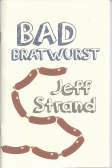
Bad Bratwurstby Strand, Jeff
- Chapbook - Softcover
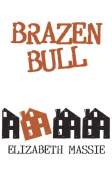
Brazen Bullby Massie, Elizabeth
- Limited - Chapbook

How the Wind Lies - Odd Numbersby Richard Chizmar, Brian James Freeman
- Chapbook - Softcover
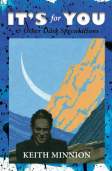
It’s For You and Other Dark Speculationsby Minnion, Keith
- Softcover - Signed

Meatcow Makerby Warner, Matthew
- Chapbook - Softcover
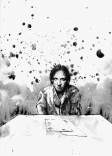
No Songs For the Starsby SanGiovanni, Mary
- Chapbook - Softcover
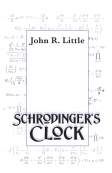
Schrodinger’s Clockby Little, John R.
- Chapbook - Softcover
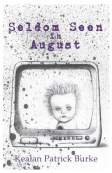
Seldom Seen in Augustby Burke, Kealan Patrick
- Chapbook - Softcover
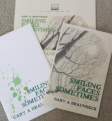
Smiling Faces Sometimesby Braunbeck, Gary A.
- Limited
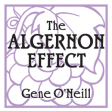
The Algernon Effectby O'Neill, Gene
- Chapbook - Softcover
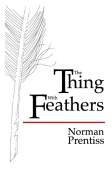
The Thing With Feathersby Prentinss, Norman
- Chapbook - Softcover
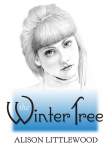
The Winter Treeby Littlewood, Alison
- Chapbook - Softcover
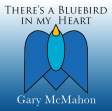
There’s A Bluebird In My Heartby McMahon, Gary
- Chapbook - Softcover
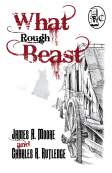
What Rough Beastby Charles Rutledge, James Moore -
- Chapbook - Softcover

Wolfmen in the Wild West: A Review of What Rough Beast by James A. Moore and Charles R. Rutledge
Monday, February 9th, 2015 | Posted by westkeith
What Rough Beast
James A. Mooreand Charles R. Rutledge
Illustrations by Keith Minnion
White Noise Press
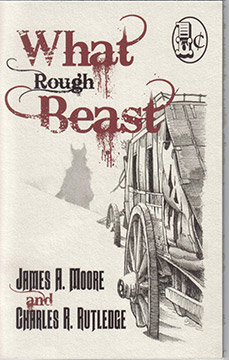
Signed and numbered hand-crafted Chapbook, 28 p., $17.00 ($15.00 plus $2.00 shipping)
Chapbooks have been around for a long time. For those who may be unfamiliar with them, they are short books usually consisting of a single story, although short collections are also common. They tend to focus on a particular work, or in the case of several stories, a particular writer.
The quality of chapbooks can vary. Before technology made it possible to produce professional level products, it was not uncommon to see chapbooks that were simply photocopies stapled together. These days, though, chapbooks can be works of art. Like the one we’re going to look at today. More on that in a bit.
Until recently, White Noise Press was not a publisher with which I was familiar. I was, however, familiar with the work of Moore and Rutledge, both collaboratively (here) as well as individually (here and here). These authors have a knowledge and love of the genre, and it shows in their work. Guys who are fans of Karl Edward Wagner and Manly Wade Wellman are all right in my book.
So when Charles contacted me not long ago inquiring if I would like a review copy of What Rough Beast, I thought about it for a while (1 while = 0.5 nanoseconds), then said yes.
The story is a weird western. It opens with Deputy Tom Morton watching for an overdue stage. His wife Hanna is on it, a snow storm is in progress, there have been wolf attacks in the area, and night is falling. Not a good combination. The sheriff is leading a posse on a hunt for bank robbers. He’s taken most of the reliable men with him.
Morton wants to lead a party to check on the stage, but he gets very little support. His only companions are an aging shopkeeper and a stranger in the saloon who goes by the single name of Kharnn. Kharnn is a giant of a man.
As they are leaving two more strangers enter the saloon. The first is a gentleman names Johnathan Crowley. He and Kharnn not only know each other, but they have a history. From hints dropped, they appear to have a long history.
The man with Crowley is named Slate. He’s extremely pale, and he gives Morton a major case of the creeps. The two newcomers immediately agree to join the search party. They’re in town for a reason, and that reason might involve the missing stage coach.
I’m not letting any secrets slip when I say that the stage is in trouble, none of the three strangers are what they seem, and the creatures that have been attacking aren’t exactly wolves. With these story elements, you can probably tell that What Rough Beast is a story you can sink your teeth into.
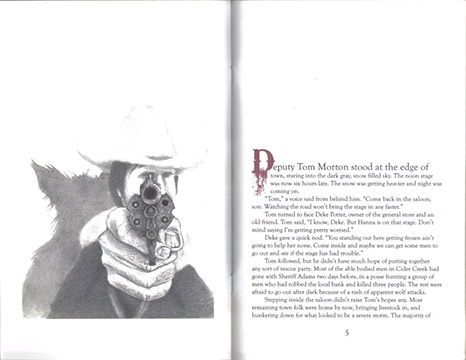
Moore and Rutledge handle the pacing and character development with ease. They also handle the conflict and violence well. There’s a balance in this kind of story between what is shown and what is implied. What that balance should be exactly will vary from one reader to the next. I thought the balance was perfect. Quite a bit of blood will be spilled, but the authors never over do it and descend into slaughter porn. Their monsters aren’t simply killing machines. In fact the head of the pack has a completely understandable motivation, one that I never would have thought of but makes perfect sense.
They also give you enough hints about Kharnn and Crowley to make you want to know more. Like just how old are these guys? What is the revenge Kharnn took that Crowley mentions? And just who is Slate and what exactly is his relationship to Crowley? Like I said, I want to see more of these characters.
Now, let’s discuss the production values of this chapbook. As much as I love the convenience and space-saving advantages of ebooks, I also am one of those people who believes that the art of a book isn’t limited to the words on the page but can extend to the packaging itself.
White Noise Press produces hand crafted chapbooks. There are at least four different types of paper and three Old West style fonts used in this book. The paper with the text is a heavy white paper on which the typesetting is sharp and clear. Keith Minnion’s artwork is an excellent fit for the story. The chapbook is produced to look like an old penny dreadful from the 1800s, right down to the rough outer edge on the back cover. (The rough edge doesn’t show up in the scan. I tried using a photo but ran into problems with image size and clarity.)
The price might be a bit steep for a casual reader, but for people who like books in which the packaging adds to the story, this one is a good buy in terms of both story and packaging.
I would like to thank the authors and Keith Minnion for providing the review copy of What Rough Beast.